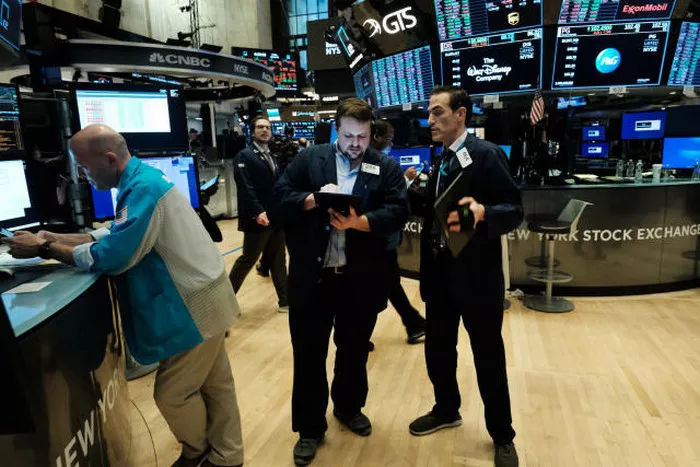Understanding the optimal number of futures contracts to buy is a fundamental aspect of risk management and trading strategy. The decision on how many contracts to purchase involves a careful evaluation of factors such as account size, risk tolerance, market conditions, and trading goals.
Account Size and Capital Allocation
The size of your trading account is a pivotal factor when determining how many futures contracts to buy. It directly influences your ability to withstand market fluctuations and potential losses. As a general rule, traders should avoid allocating a significant portion of their capital to a single trade. Many experts recommend limiting the risk per trade to a small percentage of the total trading capital, often in the range of 1% to 3%.
For example, if you have a $100,000 trading account and are willing to risk 2% on a trade, your maximum risk per trade would be $2,000. This figure serves as a guide when calculating position size and, consequently, the number of futures contracts to purchase.
Risk-Reward Ratio and Position Sizing
The risk-reward ratio is a critical metric that traders use to assess the potential profitability of a trade relative to its associated risk. It is the ratio of the amount a trader stands to lose (risk) compared to the potential profit. Common risk-reward ratios include 1:1, 1:2, or even 1:3.
Suppose a trader is willing to risk $500 on a trade with a 1:2 risk-reward ratio. In this scenario, the trader aims to make a profit of $1,000. Using the maximum risk per trade (as determined by the account size), the trader can then calculate the position size and, consequently, the number of futures contracts to purchase.
Volatility and Average True Range (ATR)
Volatility is a key consideration when determining position size in futures trading. More volatile markets may require a smaller position size to accommodate larger price swings and potential losses. Traders often look to indicators such as the Average True Range (ATR) to gauge market volatility.
The ATR provides a measure of the average price range of a market over a specific period. By assessing the ATR, traders can adjust their position sizing to align with the prevailing market conditions. Higher volatility may prompt a reduction in the number of futures contracts to mitigate risk, while lower volatility could warrant a larger position size to capture potential price movements.
Leverage and Margin Requirements
Leverage is a characteristic inherent to futures trading, allowing traders to control a more substantial position with a relatively smaller amount of capital. While leverage enhances profit potential, it also amplifies the risk of losses. Therefore, understanding and managing leverage is crucial when determining how many futures contracts to buy.
Each futures contract has a specific margin requirement, which represents the amount of capital needed to open and maintain a position. Traders must consider their available margin and the associated leverage when deciding on position size. It’s essential to avoid excessive leverage that could lead to margin calls and potential liquidation of positions.
Correlation and Diversification
Diversification is a risk management strategy that involves spreading investments across different assets to reduce exposure to any single market or instrument. When considering how many futures contracts to buy, traders may assess the correlation between different contracts and their existing portfolio.
Correlated assets tend to move in the same direction, increasing the overall risk of a portfolio. By diversifying into non-correlated or negatively correlated futures contracts, traders can potentially reduce risk and achieve a more balanced portfolio. The correlation factor becomes a consideration in determining the appropriate number of contracts across different markets.
Market Conditions and Trade Setup
The specific market conditions and trade setup also influence the decision on how many futures contracts to buy. In trending markets, traders may consider larger position sizes to capitalize on sustained price movements. Conversely, in range-bound or choppy markets, smaller position sizes may be appropriate to navigate potential whipsaws.
The trader’s analysis of market conditions, including technical indicators, chart patterns, and trend analysis, contributes to the decision-making process. Adaptive position sizing based on the prevailing market environment allows for a more dynamic and responsive trading approach.
Simulation and Backtesting
Before committing real capital, traders often use simulation and backtesting to assess the performance of their trading strategy. Simulation involves executing trades in a simulated environment with historical data, while backtesting involves analyzing the strategy’s performance against past market data.
These tools allow traders to fine-tune their position sizing strategy and observe the impact on overall portfolio performance. By simulating various scenarios and market conditions, traders can gain insights into the optimal number of futures contracts to buy under different circumstances.
Psychological Considerations
Beyond the technical aspects of position sizing, psychological factors play a significant role in determining how many futures contracts to purchase. Traders must assess their own risk tolerance, emotional resilience, and ability to manage stress during periods of market volatility.
Overleveraging or taking excessively large positions can lead to emotional stress and impede a trader’s ability to make rational decisions. It is essential to align position sizing with one’s psychological comfort level to maintain discipline and consistency in trading.
Continuous Monitoring and Adjustments
Markets are dynamic, and conditions can change rapidly. Therefore, continuous monitoring of trades and periodic adjustments to position sizes are essential components of effective risk management. Traders should regularly reassess their account size, risk tolerance, and market conditions to ensure that their position sizing remains appropriate.
Conclusion
In conclusion, determining how many futures contracts to buy involves a careful and strategic approach that considers various factors. Account size, risk tolerance, risk-reward ratios, market volatility, and leverage are key elements that traders must assess. Additionally, understanding the correlation between different assets, adapting to market conditions, and factoring in psychological considerations contribute to the overall decision-making process.
By employing a systematic approach to position sizing and continuously monitoring and adjusting strategies, traders can optimize their risk-reward profile and enhance their overall performance in the dynamic world of futures trading.


